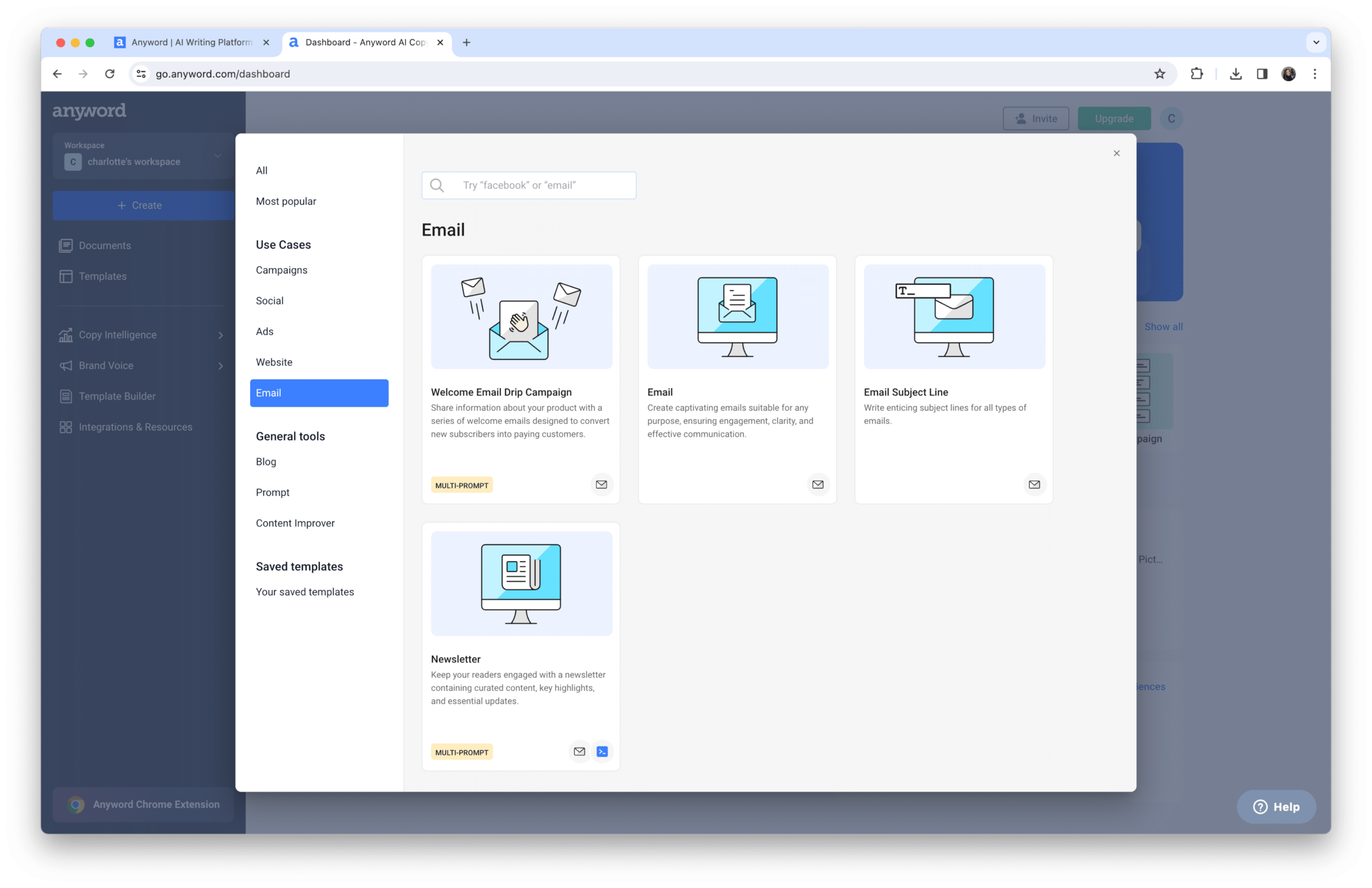Alternatives to Buffer Social Media Scheduler
1. Anyword
+Pros
- Predictive Performance Analytics
- Brand Voice Consistency
- Operational Efficiency Gains
- Mid-Market Positioning
-Cons
- Scale Requirements
- Implementation Complexity
- Transparency Paradox
- Quality Assurance Requirements
- Change Management Challenges
One highlighted feature and why it's amazing
Analyzes content against industry-specific A/B test datasets to forecast engagement metrics before publication.

Another highlighted feature of why it’s amazing
Enforces brand voice consistency through messaging frameworks and terminology management across thousands of SKUs.
2. Hootsuite Social Media Management
+Pros
- Comprehensive platform approach combining AI-powered content creation with enterprise-grade management capabilities
- Ability to maintain brand voice consistency across 12+ markets
- Proven AI capabilities including OwlyWriter AI generating captions in under 30 seconds
-Cons
- Complexity barriers for smaller organizations
- Enterprise-focused pricing structure creates accessibility challenges
- Lack of AR try-on support for fashion brands
One highlighted feature and why it's amazing
Generates captions from prompts in under 30 seconds with 10+ adjustable voice settings to match diverse brand personalities.

Another highlighted feature of why it’s amazing
Automatically tailors content for different social networks, adjusting content length and emoji usage for Instagram versus TikTok.
Other Alternatives
Later Social Media Platform
Planable Content Collaboration
How We Researched This Guide
About This Guide: This comprehensive analysis is based on extensive competitive intelligence and real-world implementation data from leading AI vendors. StayModern updates this guide quarterly to reflect market developments and vendor performance changes.
316+ verified sources per analysis including official documentation, customer reviews, analyst reports, and industry publications.
- • Vendor documentation & whitepapers
- • Customer testimonials & case studies
- • Third-party analyst assessments
- • Industry benchmarking reports
Standardized assessment framework across 8 key dimensions for objective comparison.
- • Technology capabilities & architecture
- • Market position & customer evidence
- • Implementation experience & support
- • Pricing value & competitive position
Research is refreshed every 90 days to capture market changes and new vendor capabilities.
- • New product releases & features
- • Market positioning changes
- • Customer feedback integration
- • Competitive landscape shifts
Every claim is source-linked with direct citations to original materials for verification.
- • Clickable citation links
- • Original source attribution
- • Date stamps for currency
- • Quality score validation
Analysis follows systematic research protocols with consistent evaluation frameworks.
- • Standardized assessment criteria
- • Multi-source verification process
- • Consistent evaluation methodology
- • Quality assurance protocols
Buyer-focused analysis with transparent methodology and factual accuracy commitment.
- • Objective comparative analysis
- • Transparent research methodology
- • Factual accuracy commitment
- • Continuous quality improvement
Quality Commitment: If you find any inaccuracies in our analysis on this page, please contact us at research@staymodern.ai. We're committed to maintaining the highest standards of research integrity and will investigate and correct any issues promptly.